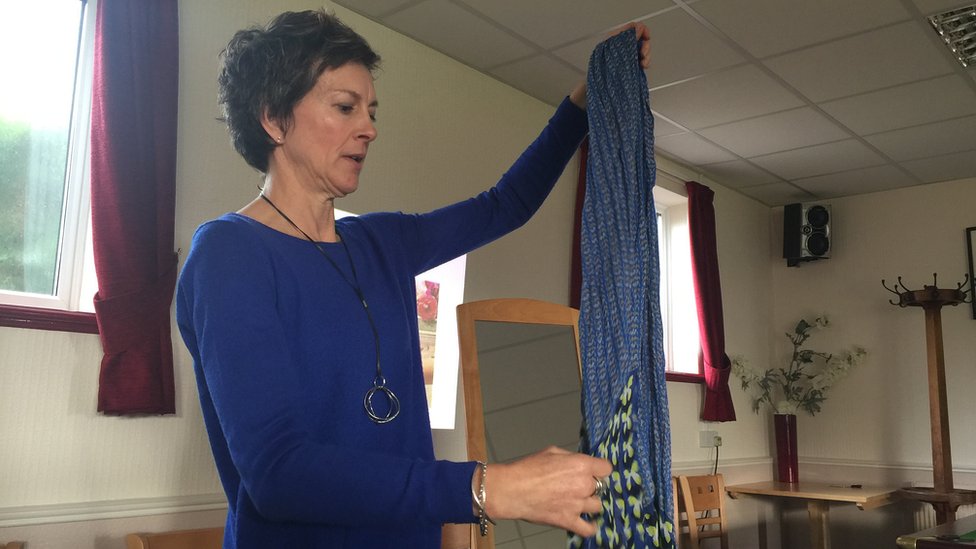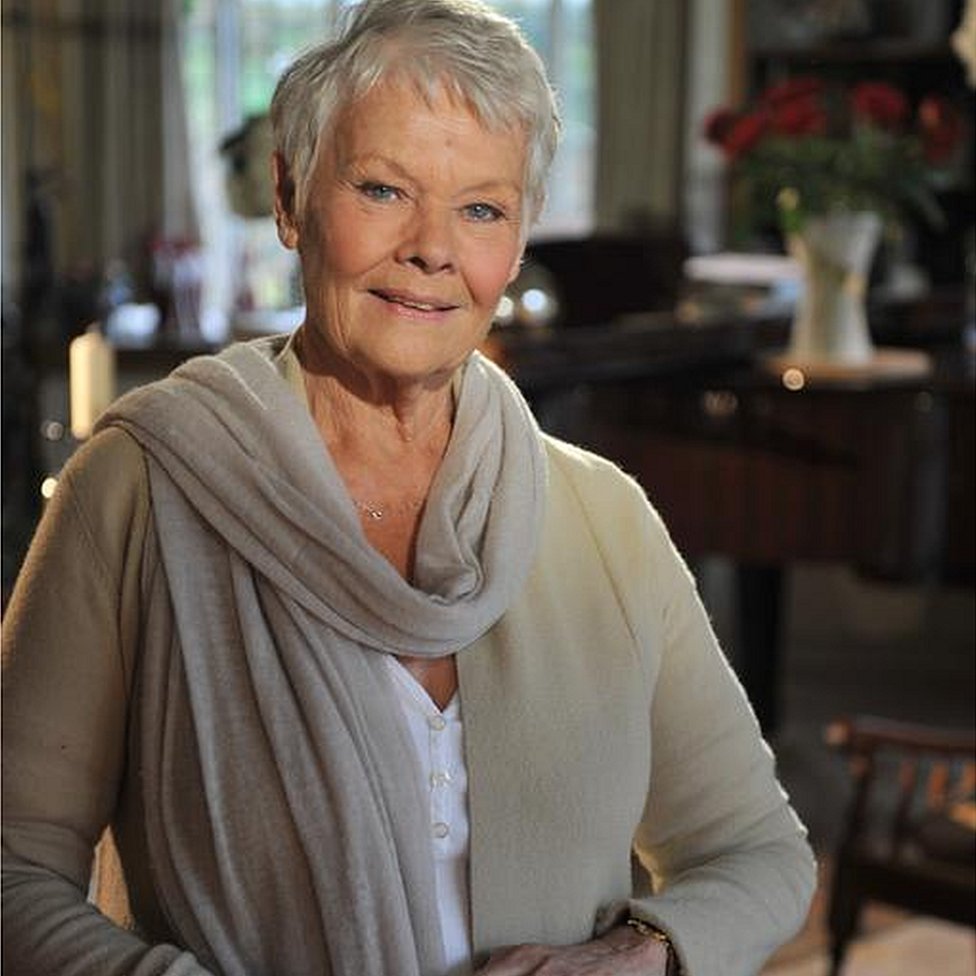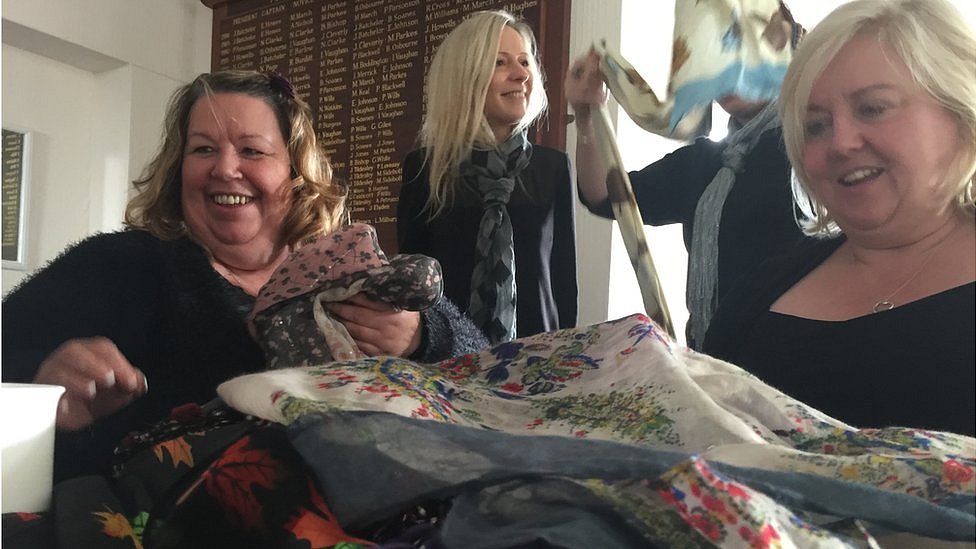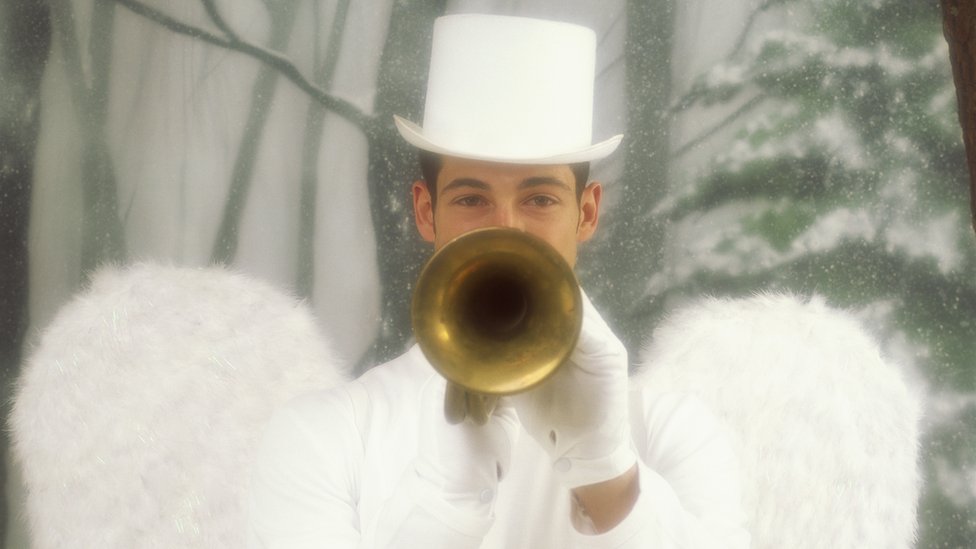My son asked me whether he could borrow my scarf. Then he asked me how best to tie it up. I told him, “you know I once went on a scarf-tying course.” He thought I was joking. I was not. It was once of the most unusual assignments I’ve been given in my time with the BBC and I realised I had not included it here. Below, I put that omission right, in the hopes that, as we head into the colder months, it might prove useful.
When an English council announced earlier this year it was facilitating a course in “wearing scarves effectively” it was roundly ridiculed by some sections of the media. But is such a course really necessary – and what does it teach?
When the news broke in August that a course was being run instructing people how to wear a scarf, the reaction in the newspapers was brutal.
“How much is there exactly to learn?” asked the Metro while the The Sun punned “You’re having a scarf?”
Those quoted in the stories labelled the course “absurd”, “a joke” and a waste of “resources”. So the BBC sent along one of its least fashion-conscious reporters to find out more.
“A scarf is an accessory,” says course leader Lesley Clarke, “so you can use them to change your overall look – they give you far more outfit options.”
Looking around a semi-circle of fellow delegates, Ms Clarke’s words meet with gracious nods and approving smiles.

This is the culmination of the three-hour course entitled “Discover How to Wear Scarves Effectively” offered by Northamptonshire County Council this week.
The course – limited to nine people – was a sell-out. All of the attendees (except the author) were women, whose ages were as varied as their reasons for being there.
Some were scarf novices, some were aficionados wanting to learn more and others wanted to learn how to use scarves to hide the effects of ageing.
Over coffee, one delegate admitted being there after previous media coverage about the course – funded entirely by attendance fees and not the council – piqued her interest.
Like many of the thousands of adult learning courses run each year, “Discover How to Wear Scarves Effectively” goes beyond what it says on the tin.
It begins with a set of optical illusions which Ms Clarke uses to demonstrate how lines and shapes can distort perception. Why? Because one of Ms Clarke’s key points is that scarves can do far more than warm a neck – they can frame your face, accentuate eye colour or make you look taller.
Consider, she suggests, Dame Judi Dench.
The actress, it transpires, is something of a scarf master and uses them very effectively to make herself appear taller than her 5ft (1.5m) frame might suggest.

“The scarf”, says Ms Clarke, “creates a vertical line down the body, accentuating length.
“But can also complement body lines and facial features.”
The curvier the body, we learn, the better softer fabrics and swirly patterns will work.
Proportion and scale, however, are vital.
So a 6ft (1.8m) man would be better wearing a tie with a larger pattern than one with tiny polka dots. A bulky scarf around a short neck is also a no-no.
After shape perception comes the dash of colour theory.
We all line up in order of complexion, from palest to darkest.
In general, Ms Clarke explains, handing us colour palette sheets, the darker your complexion the better you would be dressing in darker colours and vice-versa.
But then comes the crunch question: why do people buy scarves?

Nearly all admit to buying a particular scarf because they liked either its colour, its texture or both.
“I don’t know,” one delegate says, “a particular scarf will sometimes just scream out to me and I will buy it.”
But imagine, suggests Ms Clarke, buying a scarf not in isolation but to go with the colours of outfits you already own.
“A scarf is a visual accessory,” she says, “so how about choosing one that will go with a number of different outfits?
“It can give an outfit a whole new look and, given your average scarf is cheaper than a brand new coat, it can save you money on a new outfit. It effectively gives you new outfits and new options on how to combine them.”
But there’s more. Because for every scarf, there is an enormous variety of ways in which they can be tied.
By mentioning The Celebrity, The Big Cowl, The Pretzel, The Double Whammy, The Grecian, The Silk Butterfly, Loop the Loop and The Liberty you have to believe me when I say I am only touching the surface of the curious world of scarf-tying techniques.
In fact, we were given a list of 30 different methods. There are, I am told, far, far more options available.

Curious courses

Festive Gifts For The Family, Calderdale
Choosing Wines for Weddings, Surrey
The Danger Hand (Improvers), Kent
Introduction to Angels and Colour, Worcestershire

While the other attendees followed DVD instructions on how to try out tying styles that have interested them, Ms Clarke spends a couple of minutes with me asking how I would usually wear a scarf.
My approach is entirely utilitarian. I have one scarf and its only purpose is to keep my neck warm – but only on those rare occasions I remember to put it on.
I show Ms Clarke how I hold one end, loop the other around my neck and, well, job done.
She nods and looks at me intently before removing my scarf and making a suggestion.
She folds the scarf in half, introduces a flat twist and then reties it around my neck with the edges down.
Here’s the unexpected thing: it felt instantly lighter and more comfortable and, my fellow attendees told me, looked far more stylish.
Hooked, we get into trying out more tying styles. “Ooh,” says one delegate, “it is like origami, isn’t it?”
Until, that is, we learn our three hours have come to an end.
And the overriding question being asked by my fellow delegates is not whether their £25 course fee was worth it or whether such courses should be run by councils.
Their question was whether three hours to learn the art of effective scarf-wearing was actually enough.

